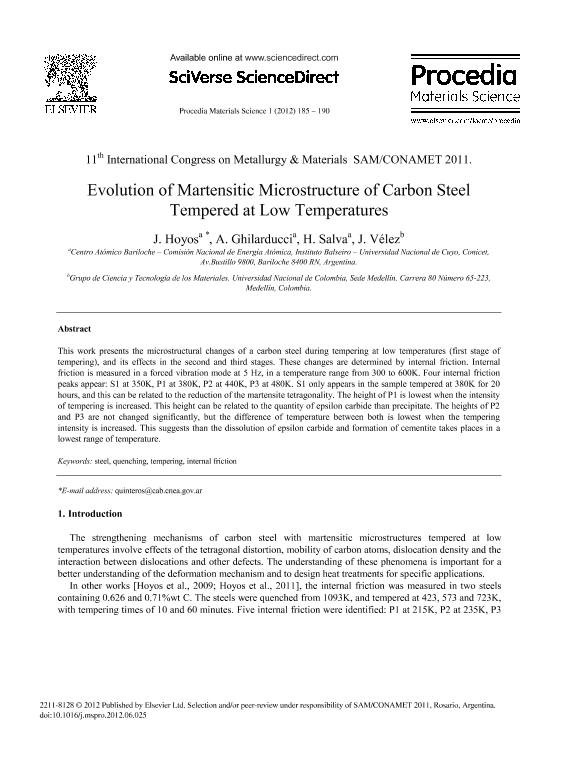Artículo
Evolution of Martensitic Microstructure on Carbon Steel Tempered at Low Temperatures
Fecha de publicación:
01/2012
Editorial:
Elsevier
Revista:
Procedia Materials Science
ISSN:
2211-8128
Idioma:
Inglés
Tipo de recurso:
Artículo publicado
Clasificación temática:
Resumen
This work presents the microstructural changes of a carbon steel during tempering at low temperatures (first stage of tempering), and its effects in the second and third stages. These changes are determined by internal friction. Internal friction is measured in a forced vibration mode at 5 Hz, in a temperature range from 300 to 600K. Four internal friction peaks appear: S1 at 350K, P1 at 380K, P2 at 440K, P3 at 480K. S1 only appears in the sample tempered at 380K for 20 hours, and this can be related to the reduction of the martensite tetragonality. The height of P1 is lowest when the intensity of tempering is increased. This height can be related to the quantity of epsilon carbide than precipitate. The heights of P2 and P3 are not changed significantly, but the difference of temperature between both is lowest when the tempering intensity is increased. This suggests than the dissolution of epsilon carbide and formation of cementite takes places in a lowest range of temperature.
Palabras clave:
Stell
,
Quenching
,
Tempering
,
Internal Friction
Archivos asociados
Licencia
Identificadores
Colecciones
Articulos(CCT - PATAGONIA NORTE)
Articulos de CTRO.CIENTIFICO TECNOL.CONICET - PATAGONIA NORTE
Articulos de CTRO.CIENTIFICO TECNOL.CONICET - PATAGONIA NORTE
Citación
Hoyos, J.; Ghilarducci, Ada Albertina; Salva, Horacio Ramon; Vélez, J. M.; Evolution of Martensitic Microstructure on Carbon Steel Tempered at Low Temperatures; Elsevier; Procedia Materials Science; 1; 1-2012; 185-190
Compartir
Altmétricas




